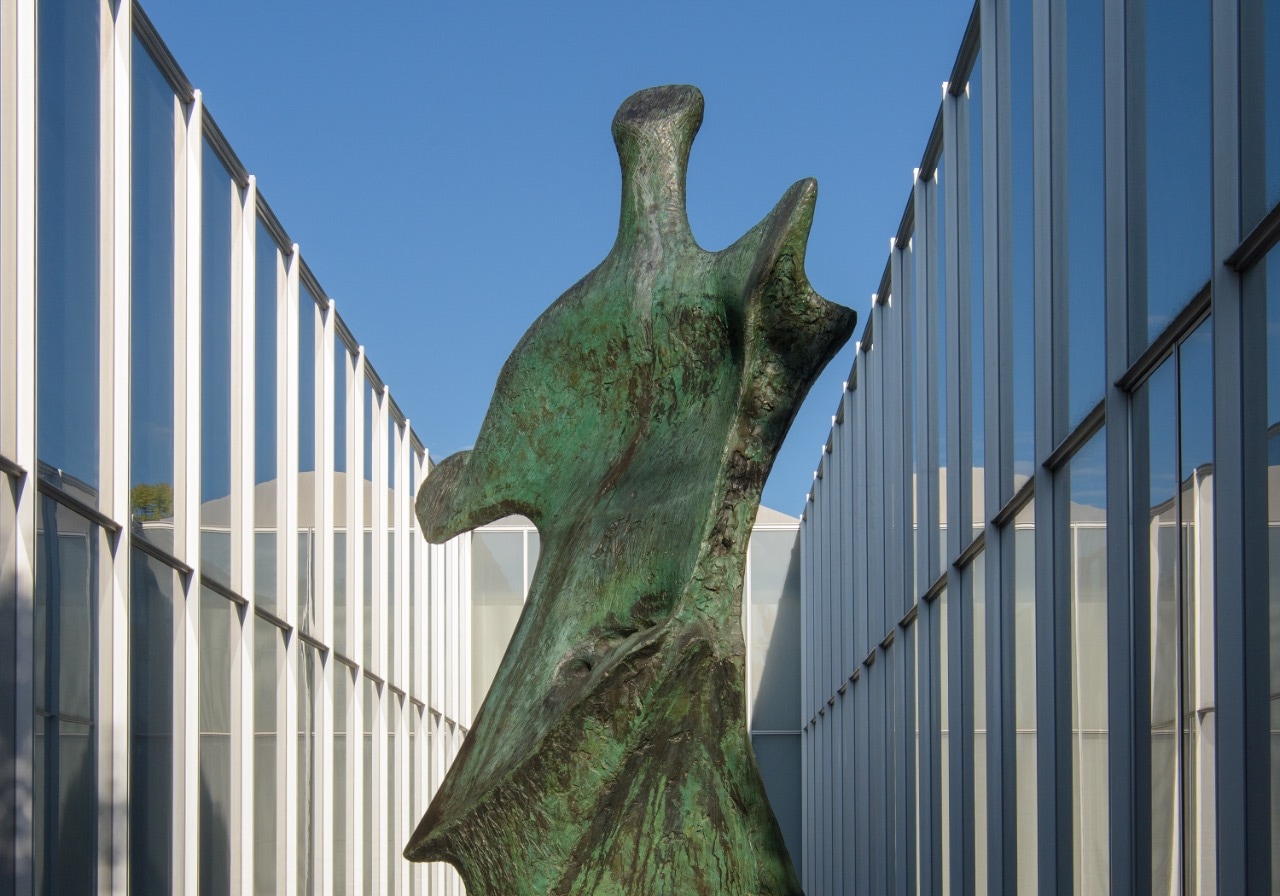Large Standing Figure: Knife Edge
Henry Spencer Moore[[translate(episode,'title')]]
[[translate(episode,'audioCredit') || translate(episode,'credit')]][[translate(episode,'title')]]
[[translate(episode,'audioCredit') || translate(episode,'credit')]]Audio Transcript
Artist Henry Spencer Moore’s sculpture titled *Large Standing Figure: Knife Edge*, arrived at the Museum in 1997. He created this sculpture in 1961, a time in Moore’s career when he was experimenting with the idea of modeling his sculptures by smearing and pinching clay on top of bone.
The form of *Knife Edge*, for example, took shape from clay that Moore applied to the top of a bird’s breastbone. The winged figure that resulted from this approach references both a bird and a well-known work of ancient art, *Winged Victory of Samothrace*, in the Louvre in Paris. The sculpture retains a suggestion of a wingspread and, with the wings’ diagonal orientation, a sensation of rising skyward.
When discussing Moore’s sculpture, former North Carolina Museum of Art curator John Coffey said, quote: “The fragility of existence is communicated just by the form. The sense of mortality in the image is very strong.”
To position *Knife Edge* into place here at the Museum, a crane was used to lift the bronze sculpture through the surrounding elm trees. Museum team members had to pull limbs away to give the sculpture clearance and guide it to the ground.
Henry Spencer Moore, *Large Standing Figure: Knife Edge*, 1961, cast 1976, H. (including base) 137 1/2 in., Bequest of Gordon Hanes
